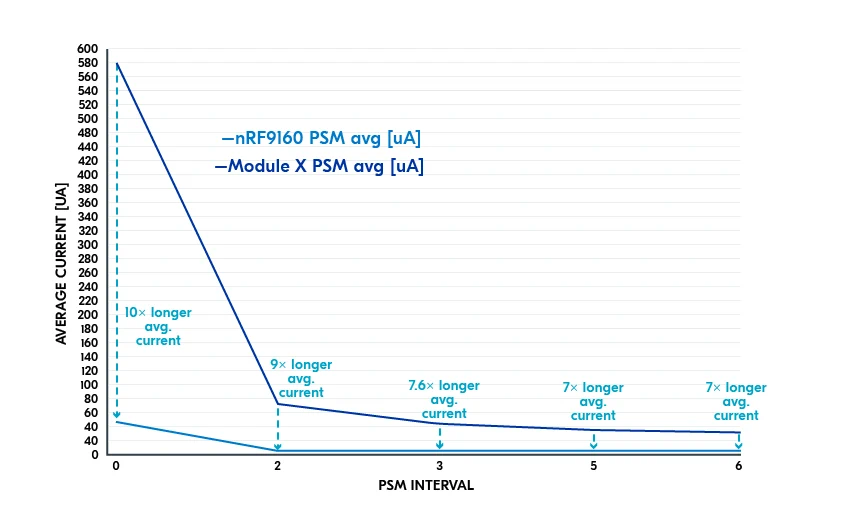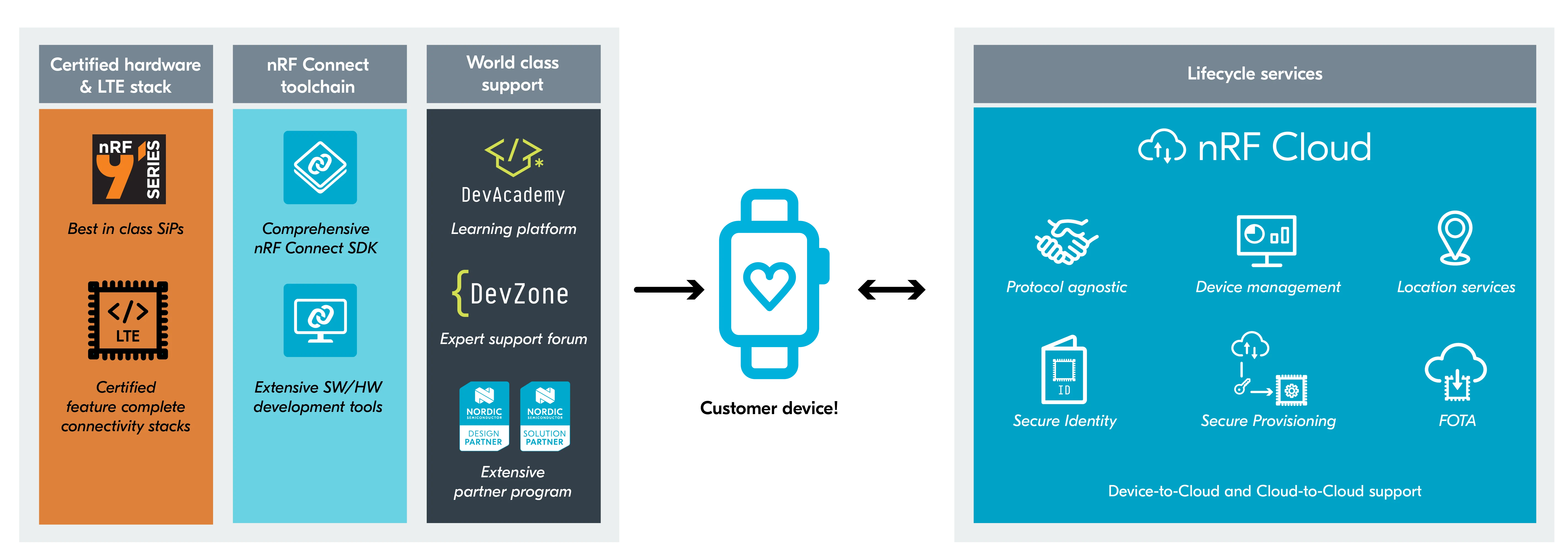Complete cellular IoT solution
Enhance your product with low power cellular connectivity: we have everything you need!
Cellular loT design has typically been a fragmented experience, with multiple components coming from different vendors such as host MCU, RF front end, cellular module, GNSS module, secure element, MIC and other elements. This fragmented solution ownership brings various challenges and risks to product developers, often leading to a sub-optimal implementation that requires many tradeoffs around cost, performance and power consumption.
At Nordic our goal is to streamline cellular product development and support the entire product lifecycle. This is why we have integrated all the different parts of our cellular offering into a complete solution – a fully Nordic-owned and controlled offering that includes hardware, software, tools, cloud services and our world-class support.
Watch our webinar to learn how Nordic's integrated cellular solutions can take you to market faster.
nRF91 Series key benefits
The advantages of the nRF91 Series in cellular IoT
| Integration: We have enabled an unprecedented level of integration by making a complete communication and application module with all relevant components in a tiny 10x16mm System-in-Package (SiP) for nRF9160 SiP, 11x12mm for the nRF9151 SiP, and 7x11mm for the nRF9131 mini SiP. This allows for cost efficient and compact designs that are not possible with competing solutions, such as a solar-powered animal tracker weighing an impressive 2.5 grams.
|
|
| |
Low Power: Your product's power consumption is not determined by a few datasheet data points, but by the average power consumption during operation. The nRF91 Series was built from the ground up for unparalleled power efficiency for all network conditions, making it possible to create ground breaking products like the world’s first solar-powered and batteryless cellular IoT asset tracker, that can operate perpetually on harvested solar energy.
|
| |
Ease of use: Development is streamlined with great documentation, full software development kit support, flexible hardware and powerful development tools. This allows customers to save significant time and resources in their development cycle while achieving the desired performance and energy targets of their applications.
|
| |
Global certifications: Certified for operations in all key regions and with all major operators, allowing your product to be easily deployed in a global stage without a complex BOM and supply chain for region specific components.
|
Power consumption beyond the datasheet
Nordic takes a holistic approach
Optimized for total average current consumption: beyond PSM floor currents
When evaluating cellular solutions, it is vital not to rely solely on a few specification points as there are various factors affecting power consumption. In the case of Power Saving Mode (PSM) floor currents, drawing conclusions based on this metric alone can lead to erroneous assessments of a device's power efficiency. Low PSM floor currents often have hidden caveats such as lack of RAM retention, and sometimes even GPIO retention. This translates into significant power consumption overhead on cellular operations, resulting in a higher average current consumption of your device. In addition, traditional cellular devices require a host MCU which increases the overall system power consumption. Nordic makes it easy to estimate and measure power consumption with our developer-friendly tools.
Looking at a data exchange example with various PSM intervals, we see that even though Module X has 50% lower PSM floor current, the average current consumption can be 7 times lower on nRF9160, even for long PSM intervals. This is because the wake up energy on Module X is much higher than on nRF9160, and that has a larger footprint than PSM floor in the overall energy consumption.

*Calculations with comparable external MCU for Module X with sleep current at 14µA (with RAM retention).
What this translates to in your end product is reduced battery size and cost, allowing for much more cost-effective and compact designs that are simply not possible with any other cellular device in the market today. The Devzone blog Maximizing battery lifetime in cellular IoT: An analysis of eDRX, PSM, and AS-RAI dives deeper into battery maximization of Cellular IoT applications.
Learn from our experts
.png?h=264&w=400&hash=1A4BD95C907FEB1BC796FCEE00CA9390)
Look out for upcoming live webinars or find all recordings of our previous sessions available on-demand.
Discover our vast library of available on-demand webinars covering all relevant topics within Cellular IoT.
